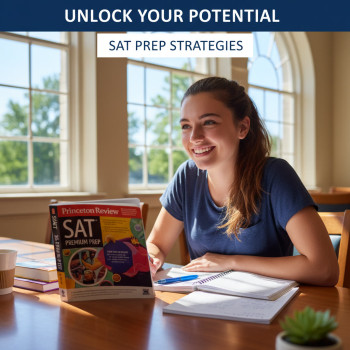Introduction: Why SAT scores are only one piece of your Top‑100 college puzzle
Take a breath. If you’re a student or a parent staring at a little four‑digit number and wondering whether it will open doors to a Top‑100 college, you’re not alone. The modern college landscape — especially among nationally ranked Top‑100 institutions — is complex. While many elite schools still consider standardized tests, a surprising number of well‑ranked colleges admit students whose SAT scores fall below the national average for the Top‑100 cohort. That doesn’t mean they don’t care about academics; it means admissions teams look at the whole applicant: coursework rigor, essays, teacher recommendations, extracurricular leadership, and the story you tell.

What “low SAT requirement” really means at a Top‑100 college
“Low SAT requirement” is a loose phrase. Colleges don’t usually publish a single cutoff these days. Instead, they publish the middle 50% SAT range for admitted first‑year students (the 25th to 75th percentiles), and many have flexible or test‑optional policies. When we say a Top‑100 college has a relatively low SAT expectation, we mean one or more of these things:
- Its published middle 50% SAT range sits lower than the Top‑100 median.
- It operates test‑optional policies that broaden the admissions pool.
- It practices holistic review, weighing context (course availability, challenges overcome, talent) heavily alongside scores.
Understanding those distinctions is crucial. A school can be in the Top‑100 and still admit a significant number of students with modest SATs if other application strengths are strong.
How to read an SAT range
When you see a school’s SAT range (for example, 1150–1350), think of it as the middle 50% of admitted students. If you score near the 25th percentile, you’re not automatically excluded — you’re in a range where applicants may have other standout features such as unique extracurriculars, distinctive essays, an unusual family or cultural background, or special talents.
Why some Top‑100 colleges admit students with lower SATs
There are several reasons. Admissions offices balance institutional priorities (diversity, major needs, geographic representation, first‑generation students), maintain commitment to access, and increasingly use test scores as one factor among many. Below are the most common reasons you’ll see when top colleges admit students with lower standardized test scores:
- Test‑optional policies give students the choice to highlight other strengths.
- Colleges actively recruit strong performers whose scores don’t reflect their classroom achievement (e.g., students from schools without AP offerings but with straight A’s).
- Some Top‑100 colleges emphasize creativity, leadership, or artistic talent — areas not measured by the SAT.
- Institutional priorities — such as geographic diversity or filling enrollment targets in particular majors — can shift the profile of admitted students.
What this means for your strategy
If you’re aiming at Top‑100 schools but your SAT is lower than the typical median, you still have strong, practical options. The trick is to build a profile that compensates, complements, and clarifies.
Practical steps a student should take
- Map your realistic range: categorize schools as reach, match, and safety using published middle‑50% ranges and your own strengths.
- Go holistic: bolster application elements — essays, recommendations, and a strong transcript — to explain context behind scores.
- Target fit, not just prestige: pick programs within Top‑100 schools where your interests align with department strengths or specific faculty.
- Use optional testing wisely: if your practice tests suggest an upward trajectory, consider submitting a higher SAT or an Advanced Placement score instead.
How parents can help without taking over
- Encourage realistic but ambitious lists — include at least two Top‑100 matches and one safety where you’d be genuinely happy.
- Help coordinate resources: campus visits, meetings with counselors, and if needed, targeted tutoring that addresses weak test areas.
- Support mental health and balanced routines; admissions committees notice students who burn out or lose focus in senior year.
Where tutoring and personalized support help most
Personalized tutoring matters when the goal is to show growth. One‑size‑fits‑all prep doesn’t help as much as targeted work on specific test sections, time management, or the essay. Services like Sparkl — with 1‑on‑1 guidance, tailored study plans, expert tutors, and AI‑driven insights — can be particularly useful because they personalize practice, identify patterns in mistakes, and help students present their best, most authentic selves across the application.

Common myths — and the truth — about low SATs and Top‑100 admissions
- Myth: “If my SAT is below the median, I have no chance.” Truth: Many admitted students fall below medians when their overall profile is strong.
- Myth: “Top‑100 = single test gatekeeper.” Truth: Admissions committees evaluate context; strong coursework, leadership, and essays matter.
- Myth: “Submitting any score hurts me.” Truth: If your score is a good representation of ability or shows improvement, submitting can help; if not, test‑optional is perfectly valid.
Example categories: How Top‑100 colleges with lower SAT expectations tend to look
Below is a practical table that categorizes the patterns you’ll see among Top‑100 colleges that often admit students with lower SATs. This table is not a roster of specific institutions; instead, it helps you spot which types of schools are likeliest to give weight to non‑score elements.
| Category | Admissions Signal | Typical Strengths of Admitted Students | When to Consider |
|---|---|---|---|
| Test‑Optional Top‑100 | Offers choice to submit scores | Strong essays, advanced coursework, leadership | When your transcript and extracurriculars outshine your test score |
| Holistic Review Focus | Context and background weighted heavily | Unique life experiences, demonstrated impact, advocacy | If you bring diversity of perspective or evidence of resilience |
| Program‑Focused Top‑100 | Department need influences admissions | Strong major‑related work, portfolio, or research | When you have specialized talents or portfolio pieces |
| Regional/Special Mission | Mission‑driven selection (first‑gen, public service) | Community involvement, service, geographic fit | If your profile matches the mission or recruitment goals |
Application tactics for students with lower SATs
Adopt these tactical moves to strengthen your chances at Top‑100 schools that accept students with lower SATs.
1. Show trajectory — and give evidence
Admissions teams love upward movement. If your SAT doesn’t reflect current ability, demonstrate academic growth in advanced classes, dual enrollment, summer programs, or through improved practice test results. Share a short context statement if there were test day hiccups or extenuating circumstances (many applications allow optional context).
2. Make essays memorable, not generic
Your essays are where personality meets evidence. Use concrete moments to show thinking and character. Don’t write what you think they want to hear; write what only you can write. Give readers a vivid snapshot — a 300–500 word scene that reveals a value, change, or insight.
3. Build meaningful extracurricular narratives
Depth beats breadth. Admissions officers prefer a student who led a club for three years and made measurable change to someone who lists ten activities with shallow involvement. Quantify impact when possible: students helped, hours committed, results achieved.
4. Use recommendations strategically
Choose recommenders who know a side of you that grades and scores don’t show. A science teacher who watched your growth in laboratory thinking or a coach who saw leadership under pressure can add credible, human detail.
How to assemble a balanced Top‑100 college list
A balanced list has reach, match, and safety schools — and a mix of institutional types. Here’s a simple framework to build that list thoughtfully:
- Start with 3–4 “reach” Top‑100 schools that excite you (where your SAT is below the typical 25th percentile but other parts of your application are strong).
- Add 3–4 “match” schools where your SAT falls within or near the middle 50% range.
- Include 2–3 “safety” options where you’d be competitive academically and would happily enroll.
Within each group, choose at least one school that values traits you have — research fit, artistic portfolios, community engagement, or career‑oriented programs.
Real‑world examples and context (how admissions stories play out)
Imagine two applicants to the same Top‑100 university. Applicant A has a 1250 SAT, straight A’s in a demanding curriculum, two years of research with a local professor, and essays that show intellectual curiosity. Applicant B has a 1400 SAT but a lighter course load, fewer demonstrated academic interests, and generic essays. Which student is more likely to earn admission? Often, Applicant A — because the academic transcript and demonstrated fit match the school’s expectations.
Admissions isn’t a purely mathematical exercise; it’s comparative narrative work. Colleges ask: who will thrive here, contribute to the community, and likely graduate? Your job is to craft a coherent narrative that answers those questions even if your SAT isn’t at the top of the range.
When to retake the SAT and when to focus elsewhere
Deciding whether to retake depends on realistic upside and time. If practice tests routinely show a 40–80 point upward trend with targeted prep, a retake makes sense. If gains have plateaued despite effort, reallocate energy: strengthen essays, secure strong recommendations, deepen major‑related experiences, or pursue complementary credentials (research, portfolios, or certifications).
Using data smartly — what to look up for each college
For each Top‑100 college you’re considering, collect and compare:
- Published middle 50% SAT range
- Test policy (required, test‑optional, test‑flexible)
- Admissions yield and acceptance rate (to gauge selectivity)
- Common majors and departmental notes (some programs are more score‑sensitive)
These pieces create a clearer picture than a single number. If you don’t have time to DIY, consider personalized advising: a tutor or counselor can pull the most relevant institutional data and help you decide where to apply and whether to submit scores.
How Sparkl-style personalized help fits in
Personalized supports — like Sparkl’s 1‑on‑1 tutoring, tailored study plans, expert tutors, and AI‑driven insights — are especially helpful when you need targeted improvement or want to make a non‑score aspect of your application shine. A good tutor identifies patterns in your mistakes, improves timing and strategy for the Digital SAT format, helps tighten essay drafts, and develops a study cadence that fits your life. When applied strategically, that support often translates into measurable score improvement and stronger non‑test application elements.
Checklist: Final steps before you apply
- Confirm each college’s current test policy and middle 50% range.
- Decide whether to submit SAT scores for each school — be selective.
- Finalize and proof essays; ask for feedback from teachers and a trusted mentor.
- Ensure recommendation writers have all materials and deadlines well in advance.
- Run a mock interview (if the college offers or recommends interviews).
- Plan a realistic timeline for any final test attempts, keeping score release dates in mind.
Parting advice: Aim for fit, not stress
Top‑100 colleges are diverse. Some prioritize traditional metrics; others prize a student’s potential and lived experience. Your goal is to find the institutions where you’ll grow, not only where rankings look best on paper. A slightly lower SAT is not a life sentence — it’s a data point. With careful strategy, polished application materials, and targeted support (whether from a school counselor or personalized tutoring like Sparkl), you can put forward an application that makes an admissions committee say: “We want this student.”
Final encouragement for students and parents
If the college process feels overwhelming, that’s normal. Break the steps down, celebrate small wins (a draft finished, a practice test improved), and remember that colleges want whole people. At the end of the day, admissions is about potential and fit as much as it is about numbers.
Ready to make a plan? Start with a realistic list, pick one essay to perfect this week, and consider a targeted tutoring session to strengthen an area that will give you the biggest return — whether that’s a section of the Digital SAT or framing your application narrative. You don’t have to do it alone, and with steady, strategic work, you’ll give yourself the best chance to join a Top‑100 campus that fits who you are and who you want to become.
Resources to explore next
- Look up each college’s published middle 50% SAT range and test policy before deciding to submit scores.
- Ask your counselor for examples of successful essays from students with similar profiles.
- Try one month of focused, one‑on‑one tutoring if you want a rapid, targeted improvement plan.
Remember: a thoughtful application — not a single number — tells your story. Write it with patience, polish it with guidance, and let your individuality lead the way.












No Comments
Leave a comment Cancel